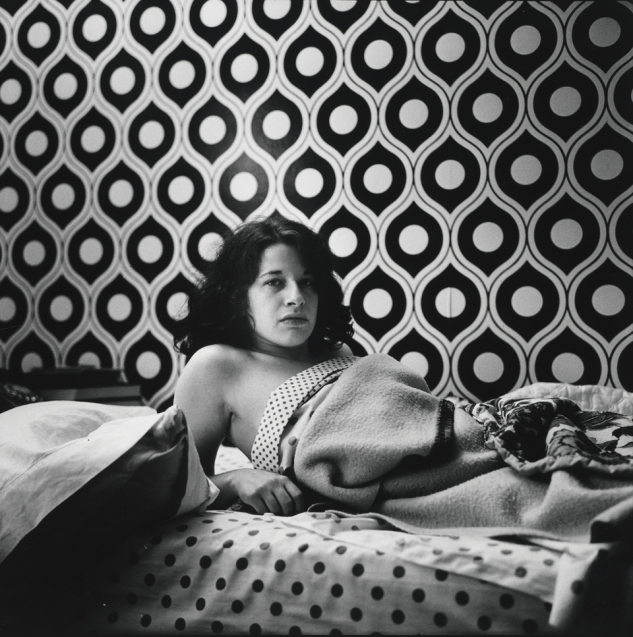Slim Jimmy and Swae Lee of Rae Sremmurd freestyle for Tim Westwood, December 2015
Eileen Gray's E. 1027
It was midsummer when I visited and a gardener was weeding among freshly planted lemon trees. Approached from the land, E.1027 is as modest as a brick of Lego, its narrow slit of windows giving little away. And yet, before you even reach the front door, it extends towards you, part of Gray’s deliberate strategy of disrupting the fixed boundary between inside and out. A summer kitchen, a shower and terraces hug the exterior, designed for cooking, washing and loitering en plein air.
To step from the womb-like entrance chamber into the living space is to be dunked in light. Gray thought entering a house should induce ‘the sensation of pleasure when one arrives with a boat in a harbour; the feeling of being enclosed but free to circulate’. Part of the charm of nautical travel is the ingenious, doll’s-house-like use of space and there’s something almost Heath Robinsonish about E.1027’s witty, ship-shape innovations: the mirrored tea tray with a cork surface, to avoid being disturbed by the chink of china on metal; the spiral staircase with insets cut into each step to slot your foot into; the tables that rise, lower, expand and contract; the bathroom mirrors angled precisely so that Badovici could assess his bald spot.
In 1929, the year that E.1027 was completed, Coco Chanel also commissioned a house in the village: La Pausa, named for the rest that Mary Magdalene supposedly took there. The difference between the two is salutary. Chanel, who grew up in poverty, craved luxury, and her house was built and furnished on a lavish scale. For Gray, however, raised in a stately home, luxury was not derived from endless rooms or opulent furnishings, but rather from privacy, discretion, refinement and exactitude. The house, as she imagined it, was a space that could be shared by people who need never be aware of each other’s presence, its contents stripped back to rigorously perfected essentials.
Even now, battered, worn and furnished with replica Bibendum chairs and daybeds, it’s a house explicitly designed for pleasure. Take the bathtub, floating beneath a lightwell and surrounded by exquisitely glazed black tiles; having a bath there must have felt like splashing in moonlight. Most rooms possess dual entrances and screens, testifying to a vision of love as a relationship between independent creatures, who require absolutely separate as well as conjoined space. ‘Even in the smallest house,’ she wrote, ‘each person must feel alone, completely alone.’

Michael Wood on William Empson
…The most blatant example of Empson’s breaking the Wimsatt Law is also the funniest and the most illuminating. To understand Hamlet, he thinks, we must go back to ‘the moment of discovery by Shakespeare’. This would have happened when Shakespeare’s company took on a Hamlet play by Thomas Kyd (or someone else), and didn’t know what to do with it because they were aware that this creaking old revenge stuff was desperately out of fashion. Shakespeare would have thought of the rewrite as ‘a pretty specialised assignment, a matter, indeed, of trying to satisfy audiences who demanded a Revenge play and then laughed when it was provided’. Still, he carried on.
I think he did not see how to resolve this problem at the committee meeting, when the agile Bard was voted to carry the weight, but already did see how when walking home … He thought: ‘The only way to shut this hole is to make it big. I shall make Hamlet walk up to the audience and tell them, again and again, “I don’t know why I’m delaying any more than you do; the motivation of this play is just as blank to me as it is to you; but I can’t help it.” What is more, I shall make it impossible for them to blame him. And then they daren’t laugh.’ It turned out, of course, that this method, instead of reducing the old play to farce, made it thrillingly life-like and profound.
Empson’s idea of Shakespeare’s ‘method’ makes the film Shakespeare in Love look like a documentary, and the touch about walking home is marvellous. But is he serious? Yes and no, but I find it impossible to measure the respective doses. He is serious about considering the ‘moment of discovery’, and about the reading of the play involved in the fiction he creates. Hamlet does talk as if he knew he was caught up in a terrible old play. The rest, the committee meeting, the ventriloquised author’s soliloquy, is bravura filling-in of comic detail: critical theatre. I don’t know – our subject is guessed-at intention after all – how comic Empson meant the detail to be.
In other moods, Empson was willing to admit that Wimsatt and Beardsley’s argument had ‘a kind of flat good sense about it, because it is hard to know how we do learn each other’s intentions’. But then he was adamant that this difficulty was no excuse for not trying to get into an author’s head. On the contrary, it means we have to try harder. ‘There is no metaphysical reason … for treating the intentions of an author as inherently unknowable.’
The most important thing in these arguments is an element that is present everywhere in Empson but only occasionally stressed. Understanding literature is not different from understanding anything else: ‘We do it all the time.’ Norris puts this very well when he says that ‘Empson’s books all seek, in different ways, to make terms between poetry and the normal conditions of language and commonsense discourse,’ and that ambiguity, for example, ‘belongs to a normal, not a uniquely poetic order of thought and language’. Making terms usually means making sense, and one of Empson’s rather tangled claims engages the Wimsatt Law in a truly intriguing way.
Any speaker, when a baby, wanted to understand what people meant, why mum was cross for example, and had enough partial success to go on trying; the effort is usually carried on into adult life, though not always into old age. Success, it may be argued, is never complete. But it is nearer completeness in a successful piece of literature than in any other use of language.
‘Partial’ and ‘usually’ make clear the practice is common but not universal, and the remark about old age is a mildly mischievous joke. But the conclusion is startling. In the very region where we might think, from our own experience, from the long, conflictive history of literary criticism, and indeed from Empson’s own work, that it has always been hardest to ‘understand what people meant’, success is less partial than anywhere else. The author’s intention is closer than anyone else’s to being fully available.
The reason for literature’s success in this respect is everywhere in Empson’s writing, often lost in the noise he is making about what he doesn’t like in current literary study, but finally not at all far from Wimsatt and Beardsley’s claim, or that of most good criticism, new or old. The completed work is the test of intention, or as Empson says, ‘you must rely on each particular poem to show you the way in which it is trying to be good.’ If we combine this statement with his remark that ‘the judgment of the author may be wrong,’ it is hard to see what the quarrel is about. Hard, but not impossible. For the same reason that he would rather have a faked biography than no biography, Empson would rather guess at the contents of an author’s mind than leave the author out of the story. This is what he says in his quieter moments: ‘I would not mind agreeing, as a verbal formula, that the intention of an author can always only be guessed at, so long as it is also agreed that the guess … should always be made.’ And rather more loudly: ‘If critics are not to put up some pretence of understanding the feelings of the author in hand they must condemn themselves to contempt.’
If we borrow the figure of the death of the author, we could imagine Barthes and Empson staring at each other as if in a mirror, without either of them knowing who the mirrored figure is. Barthes thought the author had to be seen as dead so that writing could be rescued from the tyranny of gossip and academic pedantry, and be properly read for its own sake – Calvino wanted to see writing as a machine for much the same reasons. But then Barthes later came to see he couldn’t do without the author, that he ‘desired’ this figure, as he said, that he had to construct or imagine an author in order to trace out certain meanings – ironies, for example. This was a way of discreetly letting intention back into criticism – as an invited guest rather than a police presence.
Prince covering “A Case of You”, mid-80s

Patricia Highsmith, ca. 1942




